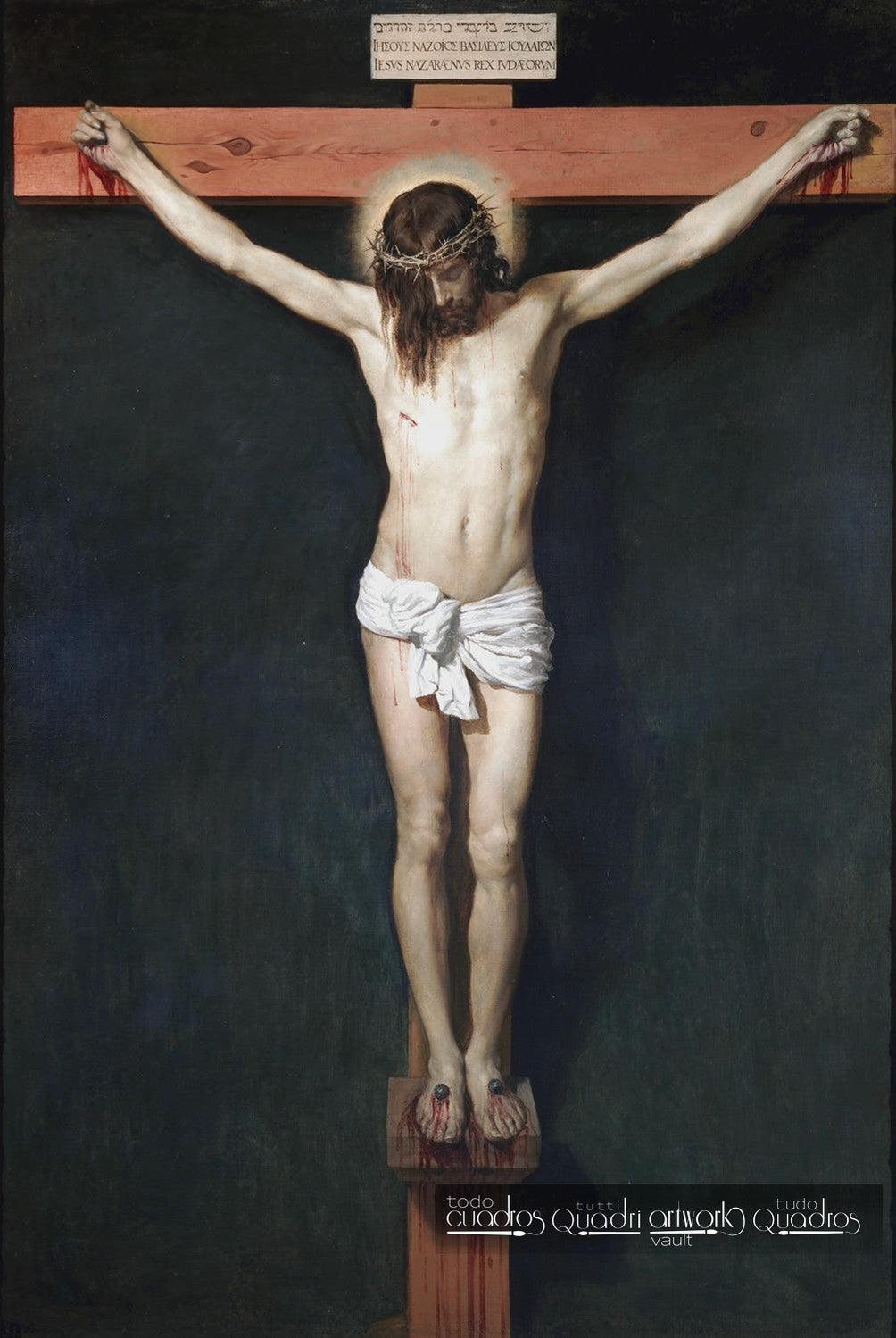

The Crucified Christ, Velázquez
- Oil on linen canvas
- 100% hand-painted
- Reproduction painting
- Available to purchase online
- See quality
- Delivery to the UK
- Money-back guarantee
- Customer reviews
| Author: | Diego Velázquez |
|---|---|
| Original Title: | The Crucified Christ |
| Type: | Painting |
| Style: | Baroque |
| Medium | Oil |
| Support: | Canvas |
| Year: | 1632 |
| Genre: | Religious paintings |
| Located: | Prado National Museum, Madrid. |
Velázquez demonstrates a masterful command of chiaroscuro and human anatomy. The light, coming from a high and invisible source, models the body with delicacy, emphasizing volume and the texture of the skin. The dark, almost uniform background removes all distractions and accentuates the contrast between the body and the cross, creating a sense of suspension in space. The artist employs a restricted palette based on earthy tones, whites, and pinkish hues. The anatomical precision of the torso, the restrained tension of the arms, and the natural tilt of the head reveal a meticulous study of the human form, brought to an exceptional level of pictorial perfection.
The painting depicts Jesus already dead, recognized by the tilt of his head, the rigidity of his arms, the pallor of his body, and the wound on his side, opened after death. The posture is balanced and serene, with a delicacy that avoids excessive dramatization. The use of four nails instead of three follows the teachings of his father-in-law and mentor Francisco Pacheco, who defended this arrangement out of historical and theological fidelity.
Considered one of the most sublime representations of the Crucified Christ in the history of Western art, this work by Diego Velázquez unites the precision of naturalism with profound spiritual depth. Recognized as a masterpiece of male anatomy, its balance between formal beauty and inner drama has inspired generations of artists and writers. The serenity of the scene, stripped of any superfluous detail, focuses attention on the central figure and transforms suffering into a gesture of solemn stillness. The composition evokes Psalm 45, verse 3: “You are fairer than the sons of men; grace is poured upon your lips; therefore God has blessed you forever.”
Choose options




